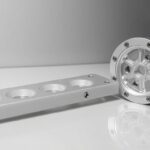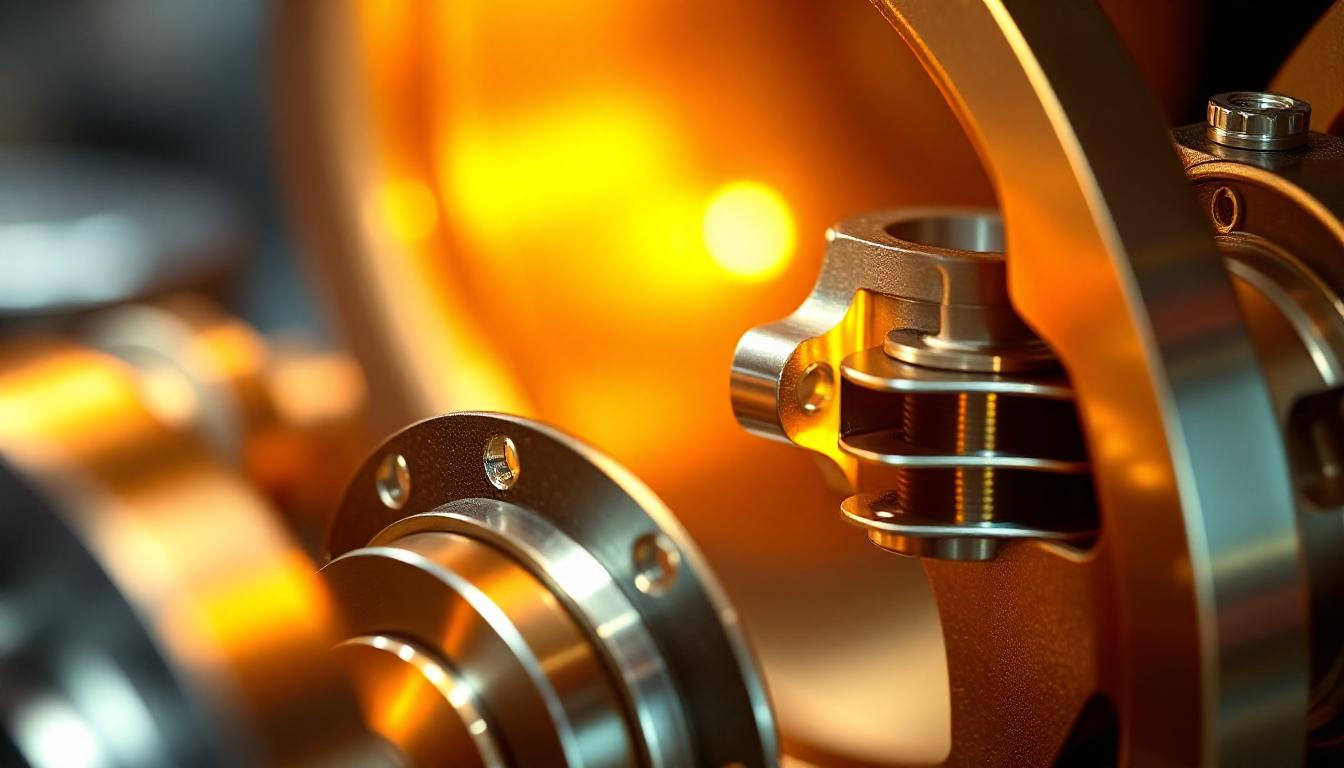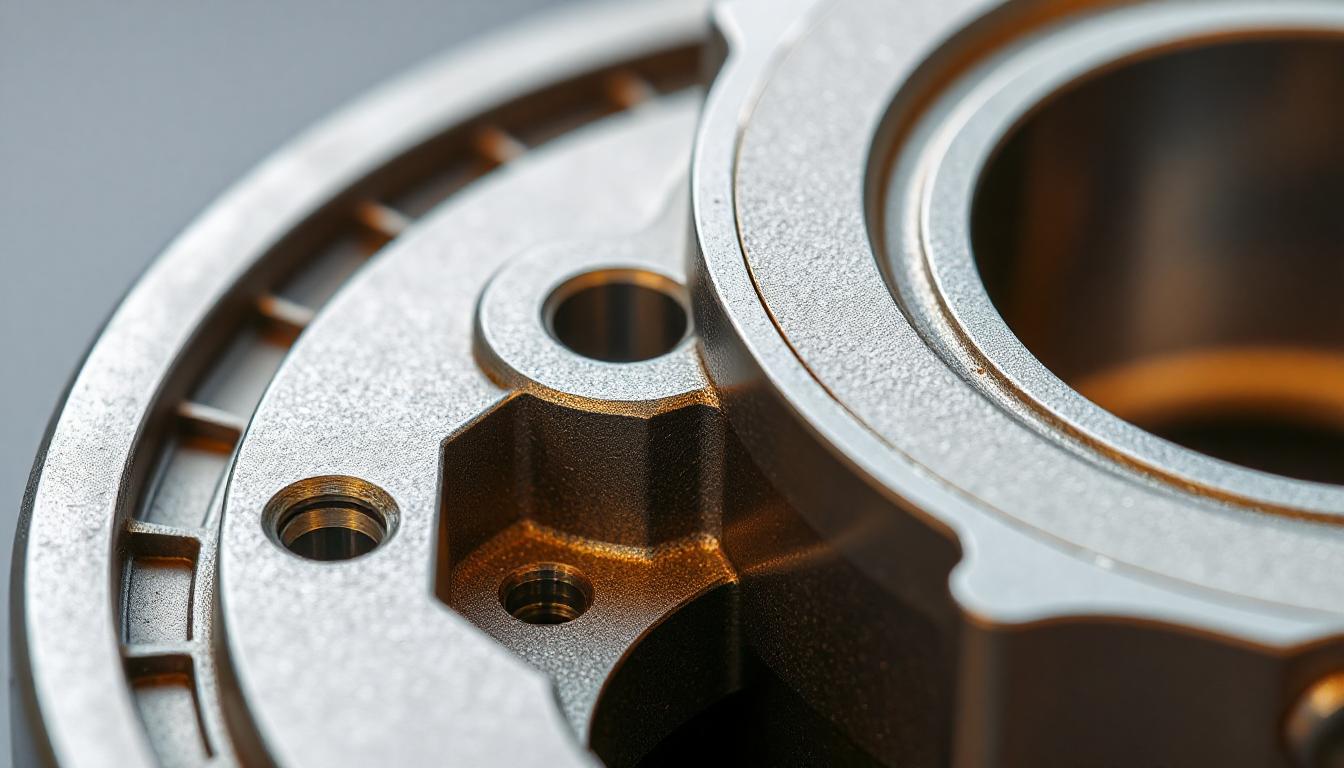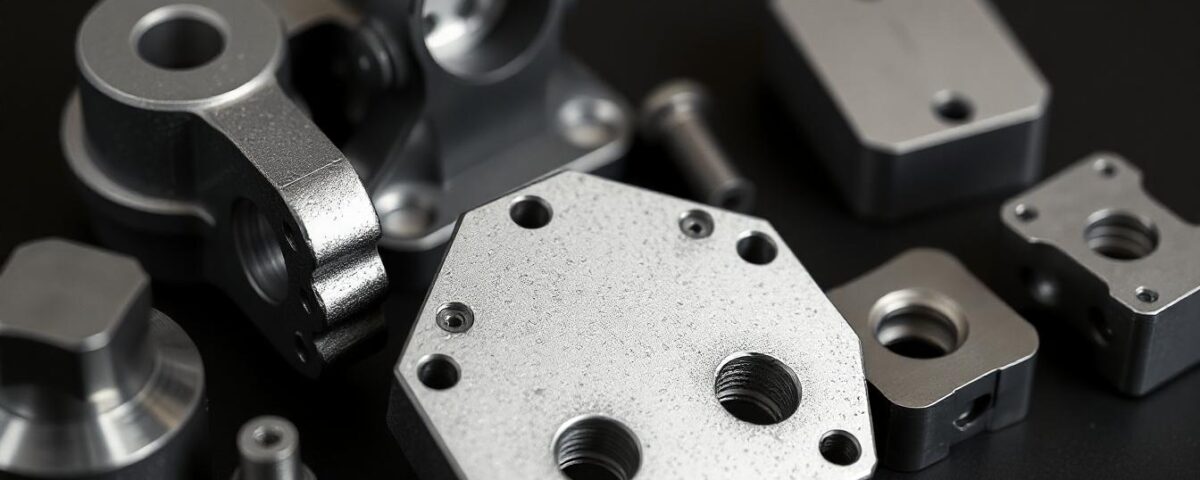
Acrylic Powder Coating: The Perfect Finish for Precision CNC Components
22 August 2024
The Impact of CNC Machining on Lightweight CNC Car Parts for Improved Fuel Efficiency
27 August 2024Choosing the right manufacturing process for high-volume CNC components is crucial for achieving efficiency, cost-effectiveness, and product quality. Zinc die casting stands out as an exceptional method, offering a unique combination of precision, speed, and durability. By leveraging the inherent properties of zinc and the advanced capabilities of die casting, manufacturers can produce complex, high-performance components at scale. In this post, I'll explore why zinc die casting is particularly well-suited for high-volume production in the CNC industry.
What Is Zinc Die Casting?
Explanation of the Zinc Die Casting Process
Zinc die casting is a precision manufacturing process where molten zinc alloy is injected into a steel mold under high pressure. This technique allows for the production of complex and intricate parts with high dimensional accuracy and a smooth surface finish. The process begins by melting zinc alloy in a furnace until it reaches a liquid state. The molten zinc is then forced into a mold cavity using a die-casting machine, which typically consists of two halves that are clamped together. Once the zinc cools and solidifies, the mold is opened, and the cast part is ejected.
The die casting process is known for its efficiency in producing large volumes of parts quickly. The molds used are made from high-grade steel and are designed to withstand the high pressures involved, making them durable and suitable for repetitive production runs. This results in minimal variation between parts, making zinc die casting ideal for high-volume production where consistency is critical.
Overview of Materials Involved, Especially the Role of Zinc
The primary material used in zinc die casting is zinc alloy, which is a combination of zinc and other metals like aluminum, copper, and magnesium. The most commonly used zinc alloys are Zamak 3, Zamak 5, and Zamak 7, each with specific properties tailored to different applications.
- Zamak 3: This alloy offers a good balance of strength and ductility, making it suitable for a wide range of applications. It is often used in automotive parts, electrical components, and consumer goods.
- Zamak 5: Known for its superior mechanical properties and resistance to corrosion, Zamak 5 is ideal for parts that require higher strength and durability.
- Zamak 7: This alloy provides enhanced fluidity, making it suitable for casting thin-walled components with complex geometries. Zinc’s low melting point (around 419°C or 786°F) allows for faster processing and reduced energy consumption compared to higher melting point metals. Additionally, zinc alloys exhibit excellent fluidity, which helps in filling intricate mold cavities and achieving fine detail in cast parts.
Comparison with Other Casting Methods
When compared to other casting methods such as aluminum and magnesium die casting, zinc die casting has distinct advantages.
- Aluminum Die Casting: While aluminum die casting offers similar precision and durability, zinc die casting is generally more cost-effective due to the lower cost of zinc and the reduced energy required for melting. Zinc also tends to produce finer details and better surface finishes compared to aluminum.
- Magnesium Die Casting: Magnesium die casting is known for its lightweight properties, but it is more expensive and can be more challenging to handle due to its high reactivity. Zinc, on the other hand, is easier to work with and provides a more economical solution for high-volume production.

The Benefits of Zinc Die Casting for High-Volume Production
Cost-Effectiveness: How Zinc Die Casting Reduces Material Waste and Production Costs
Zinc die casting stands out for its remarkable cost-effectiveness, especially when it comes to high-volume production. The process itself is efficient, utilizing molten zinc which is relatively inexpensive compared to other metals. This cost advantage is further amplified by the high recyclability of zinc, which allows for the reuse of scrap material. The closed-loop recycling system minimizes material waste and keeps costs low.
Additionally, the die casting process involves creating precision molds that are used repeatedly, leading to reduced per-unit costs. Once the initial investment in high-quality steel molds is made, the cost of producing each part decreases significantly. This makes zinc die casting an attractive option for large production runs where economies of scale can be fully realized.
Speed and Efficiency: The Rapid Production Cycle and Its Impact on Meeting Large Orders
One of the standout features of zinc die casting is its rapid production cycle. The process allows for the production of thousands of components in a relatively short period, thanks to the quick cooling and solidification of molten zinc. This efficiency is crucial for meeting tight deadlines and fulfilling large orders.
The ability to produce high volumes of parts quickly does not compromise the quality of the output. The consistent pressure used during the casting process ensures uniformity across all components, reducing the need for extensive post-processing. This speed and efficiency are particularly beneficial in industries where time-to-market is a competitive advantage.
High Precision and Accuracy: The Ability to Produce Complex and Detailed CNC Components with Minimal Variation
Zinc die casting excels in producing parts with high precision and accuracy. The high-pressure injection of molten zinc into molds ensures that even the most intricate and detailed designs are faithfully replicated. This precision is critical for CNC components, which often require tight tolerances and complex geometries.
The minimal variation between parts is a result of the stability of the die-casting process. The use of durable steel molds and the controlled environment in which the casting occurs contribute to consistent results. This level of accuracy reduces the need for additional machining or finishing processes, streamlining production and enhancing overall quality.
Durability and Strength: Why Zinc’s Properties Make It Ideal for Robust CNC Parts
Zinc’s inherent properties make it an excellent choice for producing durable and strong CNC components. Zinc alloys, such as Zamak, are known for their robust mechanical properties, including high tensile strength and resistance to impact. These qualities ensure that parts produced through zinc die casting can withstand demanding applications and harsh environments.
Furthermore, zinc components exhibit good corrosion resistance, which prolongs the lifespan of the parts and reduces the need for frequent replacements. This durability is particularly valuable in sectors like automotive and electronics, where components are subjected to wear and tear.
Advantages Over Other Manufacturing Methods
Versus Aluminum Die Casting: Why Zinc Is Often a Better Choice for High-Volume Production
While aluminum die casting is known for producing strong and lightweight components, zinc die casting often presents a more cost-effective solution for high-volume production. Zinc alloys are less expensive than aluminum, which reduces the overall cost of materials. Additionally, the lower melting point of zinc (419°C or 786°F) means less energy is required for melting, further driving down production costs.
Zinc also has superior fluidity compared to aluminum, which allows it to fill intricate mold cavities more effectively. This characteristic results in finer detail and a smoother surface finish, which can reduce or eliminate the need for secondary finishing processes. For applications where precision and detail are paramount, zinc die casting provides an edge over aluminum.
Versus Plastic Injection Molding: How Zinc Die Casting Offers Superior Strength and Longevity
Plastic injection molding is often chosen for its versatility and lower material costs. However, when it comes to strength and longevity, zinc die casting has clear advantages. Zinc alloys offer significantly higher tensile strength and durability compared to plastics. This makes zinc die casting ideal for components that need to withstand mechanical stress and environmental exposure.
Moreover, zinc components are less prone to deformation under load and offer better resistance to impact and fatigue. This inherent robustness extends the lifespan of the parts, making them suitable for demanding applications in automotive and industrial sectors. While plastic parts might be cheaper initially, zinc die casting often proves to be more economical over the long term due to its superior durability and reduced need for replacements.
Versus Machining from Solid Stock: Time and Cost Savings in Comparison to Traditional CNC Machining
Machining from solid stock involves cutting away material from a larger block to achieve the desired shape. This process can be time-consuming and expensive, especially for high-volume production. Zinc die casting offers a more efficient alternative by creating parts directly from molds, which eliminates much of the material waste and reduces production time.
The die casting process allows for the production of complex geometries and intricate details with minimal additional machining. This efficiency translates to lower labor costs and faster turnaround times. Additionally, the ability to produce multiple parts simultaneously from a single mold further enhances productivity and cost-effectiveness. In contrast, machining each part individually from solid stock can be significantly more resource-intensive.
Applications of Zinc Die Casting in CNC Components
Zinc die casting is highly valued across various industries for its ability to produce precise, durable components. Its applications in CNC components are widespread, driven by the need for high-quality parts that combine strength with intricate detail. Here’s a look at some key areas where zinc die casting excels:
Automotive Industry
In the automotive sector, zinc die casting is utilized to produce a range of components, including brackets, housings, and structural parts. The process’s ability to create complex shapes with high precision makes it ideal for automotive applications where components must meet strict performance and safety standards. Zinc parts used in vehicles benefit from excellent impact resistance and durability, essential for enduring the stresses of daily operation.
Electronics Industry
The electronics industry also relies heavily on zinc die casting for producing components such as housings, heat sinks, and mounting brackets. Zinc's superior thermal conductivity is particularly valuable for heat dissipation in electronic devices. Additionally, the precision of zinc die casting ensures that electronic components fit together perfectly, which is crucial for maintaining device integrity and performance.
Consumer Goods
In consumer goods, zinc die casting is used for manufacturing items like door handles, knobs, and decorative hardware. The ability to achieve fine details and high-quality finishes with zinc makes it a popular choice for parts that need to combine aesthetic appeal with functional strength. The durability of zinc components also contributes to the longevity and reliability of everyday products.
Industrial Equipment
Zinc die casting is employed in various industrial applications, including machinery parts and tool components. The robustness and wear resistance of zinc alloys make them suitable for parts subjected to heavy use and challenging environments. Precision-cast components ensure efficient operation and longevity of industrial equipment.
Environmental Impact and Sustainability
Recycling and Reusability: How Zinc Die Casting Aligns with Sustainable Manufacturing Practices
Zinc die casting is highly compatible with sustainable manufacturing practices due to its exceptional recycling and reusability characteristics. Zinc is one of the most recyclable metals, and zinc die casting components can be reclaimed and reused without significant loss of quality. Scrap material from the die casting process can be melted down and reintroduced into the production cycle, significantly reducing waste and the demand for new raw materials. This closed-loop recycling system not only conserves resources but also minimizes the environmental footprint of the manufacturing process.
Energy Efficiency: Lower Energy Consumption Compared to Other Metal Casting Processes
Zinc die casting is more energy-efficient compared to other metal casting processes such as aluminum and magnesium die casting. Zinc has a lower melting point (419°C or 786°F) which requires less energy to achieve compared to the higher melting points of aluminum and magnesium. This reduction in energy consumption contributes to lower greenhouse gas emissions and makes the overall production process more environmentally friendly. Additionally, the quick cooling and solidification of zinc reduce the time and energy needed for cooling compared to other metals.
Longer Product Life Cycle: The Durability of Zinc Components Reduces the Need for Frequent Replacements
Zinc die-cast components are known for their durability and long lifespan. The robust mechanical properties and corrosion resistance of zinc alloys ensure that components can withstand wear and environmental stress, leading to fewer replacements and repairs. This extended product life cycle not only reduces the frequency of manufacturing new parts but also lessens the overall environmental impact associated with the production and disposal of components. By providing long-lasting solutions, zinc die casting supports sustainability goals through reduced resource consumption and waste generation over time.

Challenges and Considerations
Initial Tooling Costs: Addressing the Upfront Investment for Die-Casting Molds
One of the primary challenges associated with zinc die casting is the significant initial investment required for die-casting molds. High-quality steel molds, which are essential for producing precise and consistent parts, can be expensive. The cost of designing, machining, and maintaining these molds can be substantial, particularly for small-scale or custom projects. This upfront investment can be a barrier for some manufacturers, especially when entering new markets or experimenting with new designs. However, for high-volume production runs, the cost of tooling is amortized over the large number of parts produced, making it more economical in the long run.
Material Limitations: Situations Where Zinc Might Not Be the Ideal Choice
Despite its many advantages, zinc die casting may not always be the best choice for every application. Zinc alloys, while durable, have limitations in terms of strength and temperature resistance compared to materials like aluminum or steel. For components that require exceptional mechanical properties or are exposed to extremely high temperatures, other materials might be more suitable. Additionally, zinc can be less effective in applications where extreme corrosion resistance is needed, especially in highly acidic or alkaline environments.
Complexity of Design: Balancing Intricate Designs with Manufacturability in High-Volume Production
While zinc die casting is capable of producing complex and detailed parts, there are practical limits to the intricacy of designs that can be economically manufactured. Highly intricate designs may require more elaborate molds, which can drive up costs and extend lead times. Manufacturers must balance the complexity of design with the manufacturability of the parts. This often involves collaborating closely with design engineers to ensure that the parts are feasible to produce while maintaining the desired level of detail and functionality. Effective design-for-manufacturability practices can help in optimizing the design to fit within the capabilities of the die casting process.
Conclusion
Zinc die casting presents a compelling choice for high-volume CNC component production, thanks to its cost-effectiveness, efficiency, precision, and durability. While the initial tooling investment and material limitations pose challenges, the benefits—such as reduced material waste, rapid production cycles, and long-lasting components—make it an attractive option for many industries. By understanding and addressing these challenges, manufacturers can leverage zinc die casting to achieve high-quality, economical solutions for a range of applications, ensuring both performance and sustainability in their production processes.




